- Home
- Gladys Mitchell
Convent on Styx (Mrs. Bradley)
Convent on Styx (Mrs. Bradley) Read online
Titles by Gladys Mitchell
Speedy Death (1929)
The Mystery of a Butcher’s Shop (1929)
The Longer Bodies (1930)
The Saltmarsh Murders (1932)
Death at the Opera (1934)
The Devil at Saxon Wall (1935)
Dead Men’s Morris (1936)
Come Away, Death (1937)
St. Peter’s Finger (1938)
Printer’s Error (1939)
Brazen Tongue (1940)
Hangman’s Curfew (1941)
When Last I Died (1941)
Laurels Are Poison (1942)
Sunset Over Soho (1943)
The Worsted Viper (1943)
My Father Sleeps (1944)
The Rising of the Moon (1945)
Here Comes a Chopper (1946)
Death and the Maiden (1947)
The Dancing Druids (1948)
Tom Brown’s Body (1949)
Groaning Spinney (1950)
The Devil’s Elbow (1951)
The Echoing Strangers (1952)
Merlin’s Furlong (1953)
Faintley Speaking (1954)
On Your Marks (1954)
Watson’s Choice (1955)
Twelve Horses and the Hangman’s Noose (1956)
The Twenty-Third Man (1957)
Spotted Hemlock (1958)
The Man Who Grew Tomatoes (1959)
Say It with Flowers (1960)
The Nodding Canaries (1961)
My Bones Will Keep (1962)
Adders on the Heath (1963)
Death of a Delft Blue (1964)
Pageant of Murder (1965)
The Croaking Raven (1966)
Skeleton Island (1967)
Three Quick and Five Dead (1968)
Dance to Your Daddy (1969)
Gory Dew (1970)
Lament for Leto (1971)
A Hearse on May-Day (1972)
The Murder of Busy Lizzie (1973)
A Javelin for Jonah (1974)
Winking at the Brim (1974)
Convent on Styx (1975)
Late, Late in the Evening (1976)
Noonday and Night (1977)
Fault in the Structure (1977)
Wraiths and Changelings (1978)
Mingled with Venom (1978)
Nest of Vipers (1979)
The Mudflats of the Dead (1979)
Uncoffin’d Clay (1980)
The Whispering Knights (1980)
The Death-Cap Dancers (1981)
Lovers, Make Moan (1981)
Here Lies Gloria Mundy (1982)
Death of a Burrowing Mole (1982)
The Greenstone Griffins (1983)
Cold, Lone and Still (1983)
No Winding Sheet (1984)
The Crozier Pharaohs (1984)
Gladys Mitchell writing as Malcolm Torrie
Heavy as Lead (1966)
Late and Cold (1967)
Your Secret Friend (1968)
Shades of Darkness (1970)
Bismarck Herrings (1971)
This is a work of fiction. Names, characters, organizations, places, events, and incidents are either products of the author’s imagination or are used fictitiously.
Text copyright © The Executors of the Estate of Gladys Mitchell 1975
All rights reserved.
No part of this book may be reproduced, or stored in a retrieval system, or transmitted in any form or by any means, electronic, mechanical, photocopying, recording, or otherwise, without express written permission of the publisher.
Published by Thomas & Mercer, Seattle, 2014
www.apub.com
First published in Great Britain in 1975 by Michael Joseph
Amazon, the Amazon logo, and Thomas & Mercer are trademarks of Amazon.com, Inc., or its affiliates.
E-ISBN: 9781477869192
A Note about this E-Book
The text of this book has been preserved from the original British edition and includes British vocabulary, grammar, style, and punctuation, some of which may differ from modern publishing practices. Every care has been taken to preserve the author’s tone and meaning, with only minimal changes to punctuation and wording to ensure a fluent experience for modern readers.
Contents
Preface
PART ONE CONVENT
CHAPTER 1 The Companions of the Poor
CHAPTER 2 Sniper’s Bullet
CHAPTER 3 Accident
CHAPTER 4 Other Inmates
CHAPTER 5 Exit Mrs. Wilks
CHAPTER 6 Repercussions
CHAPTER 7 The Convent Is Haunted
CHAPTER 8 The Nuns Are Perplexed
CHAPTER 9 Conclave and After
PART TWO STYX
CHAPTER 10 The Styx Is a Pond
CHAPTER 11 The Secular Arm
CHAPTER 12 Interrogation and Surmise
CHAPTER 13 Verdict
CHAPTER 14 Fell or Was Pushed?
CHAPTER 15 The Cartwright Contribution
CHAPTER 16 The Contents of a Cellar
CHAPTER 17 Re-Enter Mrs. Wilks
CHAPTER 18 Farewell to the Nuns
About the Author
Preface
“Convents are always news, George,” Gladys Mitchell’s detective heroine Dame Beatrice Lestrange Bradley observes to her chauffeur in an earlier convent-set novel, St. Peter’s Finger (1938). They certainly provide a rewarding environment for a murder mystery, as many writers have found—one where the normal values of a secular society do not apply, and where the contrast between the godly atmosphere and the evil happenings can be strongly pointed. Convents, by virtue of their celibate all-female population as much as their alien religion, have always fascinated and repelled the English public in equal measure: as Dame Beatrice remarks in that same novel, “People nearly always exaggerate when they write or talk about convents.” But she—and her author, neither of them members of the Faith—treat such communities with quiet respect and acceptance of their values and customs, though never pretending to share or even understand them. Though parody is a common feature of Mitchell’s literary style, it is never present in this context.
By profession a teacher, Gladys Mitchell churned out over 80 novels during break times at school. Her work depicts the leisured, serviced world of the “Golden Era” of detective fiction, but in a way that often turns the conventions on its head. Justice, for Mitchell, was rarely about bringing the killer to the gallows, as it was for Agatha Christie; it was more about doing the right thing in the circumstances—so the killer might sometimes go free. The supernatural might play a part. Many of her books reflect the working world with which she was familiar—the closed community of the all-female school or college—in which victims and suspects are often women, as, of course, is her detective. But just as she avoided the prurient English fascination with the man-free community, so too she rejected the usual feminine stereotypes. Dame Beatrice is no mild-mannered Miss Marple, no beautiful, troubled Harriet Vane, but an ugly, elderly, formidable professional woman, whose training and experience as a forensic psychiatrist license an unconventional approach to unravelling the motives and mechanics of crime. Her schoolmistresses—and, here, her nuns—are all individuals, their vocations and occupations helping to form their personalities, but not to define them. Her novels are, in short, as much about characters in a setting as they are about plot and mystery (though there is plenty of these).
Convent on Styx bears all the characteristics of her style. A late work, it is unconventionally structured: the detective does not appear until 100 pages into the novel, and the murder does not take place till somewhat later. Part 1 consists of a leis
urely introduction to the lives of the various personnel of the convent and the school and their reactions to some disturbing, but not over-serious, occurrences. The murder, when it comes, seems almost incidental—as indeed it is, in the context of the wider plot. Mitchell gives a detailed account of the organisation, routines, and personalities of the convent and its school, accurately capturing their ethos and priorities as well as the nuns’ responses to the Vatican Council reforms to convent structures, statuses, and religious dress. It is fascinating to compare the changes in convent life since she wrote about it in St. Peter’s Finger 37 years before and to note that, for many of the nuns, the changes were neither welcome nor easily accommodated. But Mitchell does not simply tell what the differences are, or let us observe them through her detective’s eyes; she reveals all through the inner reflections of her individual nun characters, offering through this apparently insider’s view (though of course Mitchell was not an insider) a stream of historical data on social change as rich as any set of real-life interviews.
The work of the school is given equal emphasis, again with reference to changing social and educational norms, and here the insider’s knowledge is quite evident. Sister Mary Hilary is a modern, forward-looking headmistress of the type Mitchell clearly favoured, here given a worldly background—as a militant feminist, very current in the 1970s!—to demonstrate her suitability for her current role at the interface between the religious world of the convent and the secular one of educational management—as well, perhaps, as an indicator of the strength of her vocation. Every teacher in the school is delineated as to appearance and personality, and given a past (complete with grievances and prejudices) almost entirely uncovered through dialogue with Dame Beatrice. Of course there is a structural reason for this ploy—we have to meet and assess all the suspects—but the effect is to recreate a living, working community of a kind that is instantly recognisable and believable.
The superstitious note that introduces the investigation in Part 2—“My thumbs are pricking,” said Laura to Dame Beatrice—sets the scene for the appearance of most, if not all, of the classic hallmarks of the series. Mitchell’s interest in history, archaeology, and literature, as well as in psychology and the occult, comes to the fore here; and if there is less focus on games and physical education than is usual in her work, this may be because the book was written when the author was 74. Indeed, it is distinctly an older person’s work with its insights into the mental and physical lives of its ageing detective, the older nuns, and the elderly paying guests at the convent. This gives it a gentle, reflective character less evident in her earlier work. Dame Beatrice herself is less abrasive than usual, less inclined to cackle and be likened to a crocodile (though she still has a “yellow claw”). She solves the mystery by her usual process of interview and deduction but then, at the relevant moment, displays unwonted physical prowess by avoiding the murderer’s lethal blow. “More quickly than seemed possible in such an old and apparently frail woman, Dame Beatrice skipped from her chair and overturned it in front of his legs just as the inspector and his sergeant burst in at the door.” What an inspiration for us older woman readers! So the physical training skills are there after all. It is hard to imagine Miss Marple (or even Poirot) demonstrating such nimbleness.
Gladys Maude Winifred Mitchell (1901–83) wrote over 60 detective novels starring Mrs. (later Dame) Beatrice Lestrange Bradley, but she also produced mysteries and historical fiction under masculine pen names, short stories and collaborative work, and eight children’s books. This last group included a career novel, On Your Marks (1954), about a physical education training college, and a quartet of stories featuring an indomitable schoolgirl detective, Pam Stewart, whose exploits parallel those of her American contemporary Nancy Drew. As one of those rare authors who crossed the literary divide, writing girls’ school stories that were also detective stories, and detective novels that were also about girls’ schools, she stands out, for few writers have produced such characterful, intelligent, and original works in what are often decried as hackneyed genres.
Rosemary Auchmuty
London 2009
PART ONE
CONVENT
CHAPTER 1
The Companions of the Poor
“Let us put on concord, being humble in mind, disciplined, keeping ourselves from gossip and slander, being justified by work, not words.”
St. Clement of Rome
Sister Mary Wolstan paused for a moment in front of the Community mirror in the hall. She needed to make certain that her veil was on straight and that she was not showing too much hair over her forehead. What a difference the Recommendations had made, she thought, to all previous conceptions of what the religious habit was to look like. The younger nuns might be grateful to the Second Vatican Council which, among other and, doubtless, far more important matters, had decreed a considerable modification in the dress of the religious Orders, but many of the older nuns, herself included, remained slightly dismayed by the changes.
When, nearly forty years previously, she had been promoted from postulancy to the novitiate and from the novitiate to first and then final profession as a member of the sisterhood which called itself the Companions of the Poor, the habit she had worn had concealed everything about her except her eyes, nose, mouth, and the toe-caps of her flat-heeled, stout, black shoes; but nowadays gone were the great starched collar, the forehead-chafing headband, the black-headed pins that kept the veil in place, the becoming wimple which, in mediaeval fashion, hid both hair and ears. Gone was the toe-length gown with its flowing lines of honest, hardwearing cream serge, its generous thirteenth-century dignity and gracefulness.
Nowadays only the scapular, like the surcoat of a mediaeval knight, and the soldierly leather belt, with its looped-up rosary and crucifix, remained in sad and noble memory of august and bygone days. The present habit, made of white nylon which was easy to wash, dripped itself dry, and did not need to be ironed, was skimpy and so short that it displayed several undignified inches of white woollen or nylon stocking.
The veil, white for the novices, black for the fully professed, no longer needed pins to keep it in place. It was now made secure by a narrow band of elastic, and hair which had once been closely cropped was allowed to stray over the forehead in what Sister Wolstan considered to be a worldly, almost a frivolous fashion, hardly a crowning glory, it was true, but a nuisance and an embarrassment which made the Community mirror a necessary adjunct to convent life.
“Ichabod!” thought Sister Mary Wolstan, squinting resentfully at her reflection and putting down her briefcase in order to tuck back a straying strand. “The glory has departed.”
She picked up the heavy case and prepared to walk over to school, where she acted as secretary to the headmistress, Sister Mary Hilary. In the convent itself she was senior to Sister Hilary and preceded her into chapel, but in school she was her underling and general dogsbody. She checked and unpacked the stock, took down Sister Hilary’s letters in the shorthand she had so laboriously acquired, typed them out, and presented them for scrutiny and signature. She kept records and made out rotas, and acted as a buffer state between the headmistress and casual visitors or parents who came up to complain. In addition to all this, she was expected to render first-aid to children who had chopped or bruised their thumbs during a craft lesson, sustained a fall or a knock at games, or burnt or scalded a finger in the cookery class.
In the old days when dowries brought to the convent were bigger and new entrants into the religious life more numerous, a secular had been employed to undertake the tasks that now fell to Sister Wolstan’s lot; but now the dowries, when they came, were small and what had once been a spate of postulants had dwindled to little more than a trickle. The employment of Sister Wolstan saved money; that was the long and short of it. Sister Wolstan did not receive a salary. The convent fed, clothed, housed, and warmed her and would do so until the end of her life unless she were released from her vows, but that was al
l the recompense—or so the world would say—she received for the loss of her freedom and the negation of her right to earn.
Sister Wolstan had no real quarrel with her lot. Long enough ago she had renounced the world (although one still had to live in it), the flesh (although one still had to eat, drink, sleep, and wash), and the devil (although Sister Wolstan sometimes thought that it must be easier to oust him from a reformatory than from a convent) and she was prepared to be humble and meek, offering her meekness and her humility (and the rheumatism that had begun to trouble her) upon the same altar on which so many years ago she had laid her vows of poverty and chastity and her vow of obedience to her superiors.
What she did mind, though she had never consciously formulated the thought, let alone voiced it, was having to be subservient for eight hours a day to Sister Mary Hilary. Somehow, she felt, it was unsuitable that she should find herself in this position. For one thing, Sister Hilary was a convert to the Faith and had not entered religion until she was turned thirty. In her unregenerate days she had led protest marches, obstructed the police, and had stood out for women’s rights in a militant, aggressive, troublemaking manner that had resulted in a most disagreeable blaze of newspaper publicity and a threat of dismissal from her teaching post. Unfortunately, (although Sister Wolstan always did her best to suppress this uncharitable adverb), once she had sown her wild oats and settled down, Sister Hilary had turned out to be first class at her job and after not more than six years in religion had been appointed headmistress of the convent school and, during the eight years of her reign, had almost trebled the numbers and had achieved that most desirable goal for a fee-paying institution, a waiting list of would-be entrants. As the convent depended upon the school for a considerable portion of its income, the appointment of Sister Mary Hilary appeared to be fully justified.
Sister Wolstan had another cause for feeling aggrieved, though she did her best to suppress it. In the old days, that is to say before Sister Hilary’s appointment as headmistress, Sister Wolstan had been sent for training to a Commercial College where she learned typing, shorthand, and bookkeeping so that the school could offer an elementary course called Commercial Studies. Sister Wolstan, returning to the school with her hardly-acquired certificates, had actually taught these subjects and felt great satisfaction in doing so.

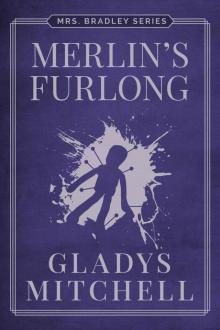 Merlin's Furlong
Merlin's Furlong Pageant of Murder (Mrs. Bradley)
Pageant of Murder (Mrs. Bradley)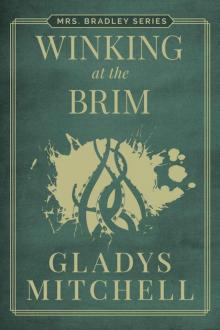 Winking at the Brim (Mrs. Bradley)
Winking at the Brim (Mrs. Bradley)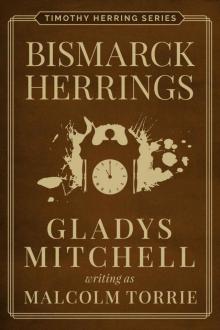 Bismarck Herrings (Timothy Herring)
Bismarck Herrings (Timothy Herring)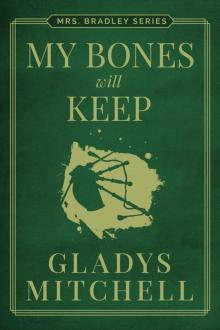 My Bones Will Keep (Mrs. Bradley)
My Bones Will Keep (Mrs. Bradley) The Man Who Grew Tomatoes
The Man Who Grew Tomatoes Say It With Flowers (Mrs. Bradley)
Say It With Flowers (Mrs. Bradley)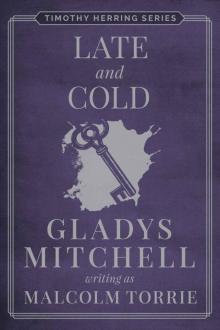 Late and Cold (Timothy Herring)
Late and Cold (Timothy Herring)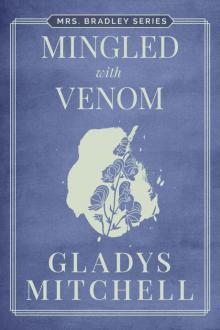 Mingled With Venom (Mrs. Bradley)
Mingled With Venom (Mrs. Bradley)![[Mrs Bradley 41] - Three Quick and Five Dead Read online](http://i1.bookreadfree.com/07/mrs_bradley_41_-_three_quick_and_five_dead_preview.jpg) [Mrs Bradley 41] - Three Quick and Five Dead
[Mrs Bradley 41] - Three Quick and Five Dead Here Lies Gloria Mundy (Mrs. Bradley)
Here Lies Gloria Mundy (Mrs. Bradley) Say It With Flowers
Say It With Flowers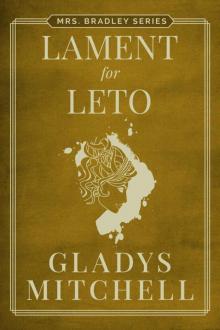 Lament for Leto (Mrs. Bradley)
Lament for Leto (Mrs. Bradley)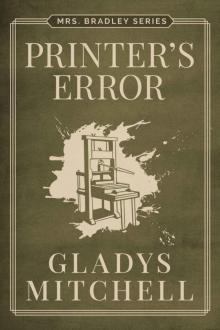 Printer's Error (Mrs. Bradley)
Printer's Error (Mrs. Bradley) The Man Who Grew Tomatoes (Mrs. Bradley)
The Man Who Grew Tomatoes (Mrs. Bradley)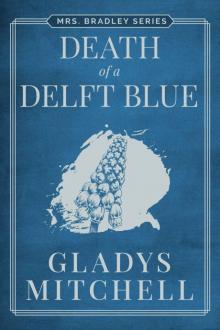 Death of a Delft Blue (Mrs. Bradley)
Death of a Delft Blue (Mrs. Bradley)![[Mrs Bradley 50] - Late, Late in the Evening Read online](http://i1.bookreadfree.com/10/mrs_bradley_50_-_late_late_in_the_evening_preview.jpg) [Mrs Bradley 50] - Late, Late in the Evening
[Mrs Bradley 50] - Late, Late in the Evening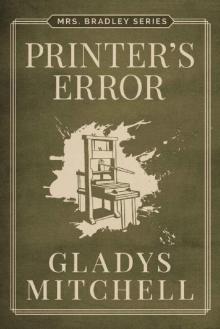 Printer's Error
Printer's Error The Crozier Pharaohs (Mrs. Bradley)
The Crozier Pharaohs (Mrs. Bradley)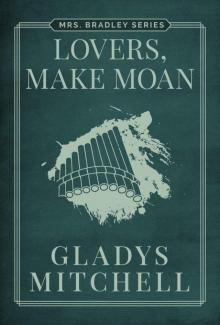 Lovers, Make Moan (Mrs. Bradley)
Lovers, Make Moan (Mrs. Bradley)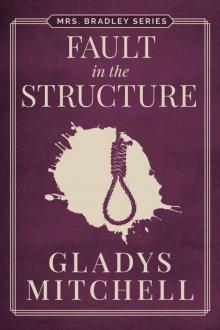 Fault in the Structure (Mrs. Bradley)
Fault in the Structure (Mrs. Bradley) Skeleton Island (Mrs. Bradley)
Skeleton Island (Mrs. Bradley) The Croaking Raven
The Croaking Raven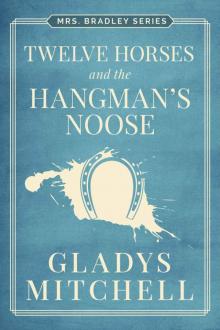 Twelve Horses and the Hangman's Noose (Mrs. Bradley)
Twelve Horses and the Hangman's Noose (Mrs. Bradley)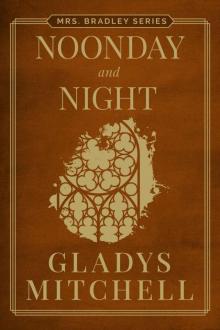 Noonday and Night (Mrs. Bradley)
Noonday and Night (Mrs. Bradley)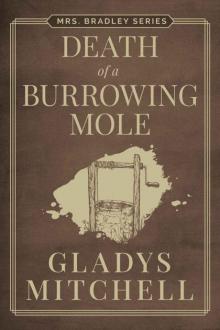 Death of a Burrowing Mole (Mrs. Bradley)
Death of a Burrowing Mole (Mrs. Bradley) A Javelin for Jonah (Mrs. Bradley)
A Javelin for Jonah (Mrs. Bradley)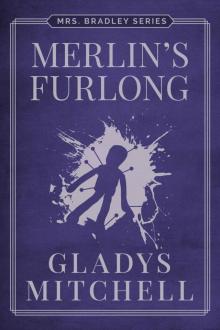 Merlin's Furlong (Mrs. Bradley)
Merlin's Furlong (Mrs. Bradley) Gory Dew (Mrs. Bradley)
Gory Dew (Mrs. Bradley) Adders on the Heath (Mrs. Bradley)
Adders on the Heath (Mrs. Bradley) The Mudflats of the Dead (Mrs. Bradley)
The Mudflats of the Dead (Mrs. Bradley)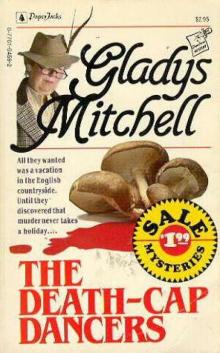 The Death-Cap Dancers mb-59
The Death-Cap Dancers mb-59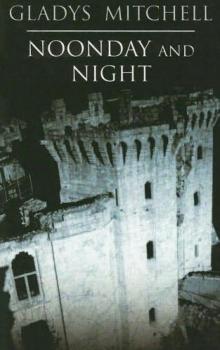 Noonday and Night mb-51
Noonday and Night mb-51 The Death-Cap Dancers (Mrs. Bradley)
The Death-Cap Dancers (Mrs. Bradley) Cold, Lone and Still (Mrs. Bradley)
Cold, Lone and Still (Mrs. Bradley) Your Secret Friend (Timothy Herring)
Your Secret Friend (Timothy Herring)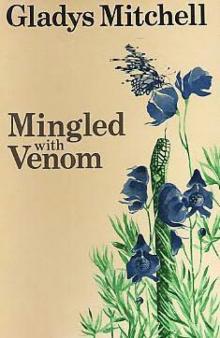 Mingled With Venom mb-54
Mingled With Venom mb-54 No Winding-Sheet mb-65
No Winding-Sheet mb-65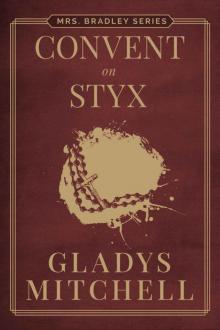 Convent on Styx (Mrs. Bradley)
Convent on Styx (Mrs. Bradley) Groaning Spinney
Groaning Spinney No Winding Sheet (Mrs. Bradley)
No Winding Sheet (Mrs. Bradley)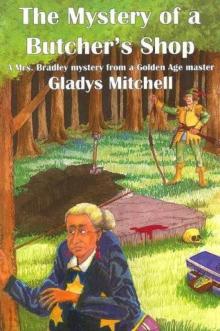 The Mystery of a Butcher's Shop mb-2
The Mystery of a Butcher's Shop mb-2 The Whispering Knights (Mrs. Bradley)
The Whispering Knights (Mrs. Bradley)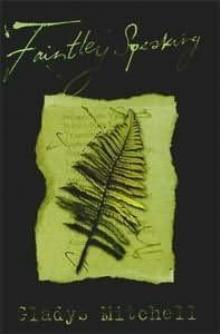 Faintley Speaking mb-27
Faintley Speaking mb-27 Saltmarsh Murders mb-4
Saltmarsh Murders mb-4 Laurels Are Poison mb-14
Laurels Are Poison mb-14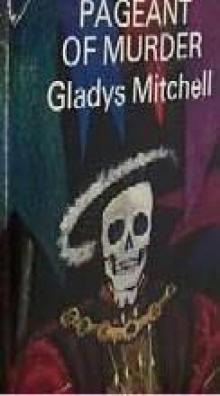 Pageant of Murder mb-38
Pageant of Murder mb-38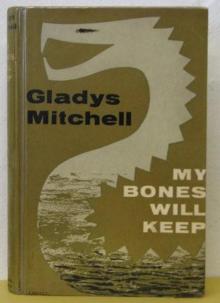 My Bones Will Keep mb-35
My Bones Will Keep mb-35 Death at the Opera mb-5
Death at the Opera mb-5 Death of a Burrowing Mole mb-62
Death of a Burrowing Mole mb-62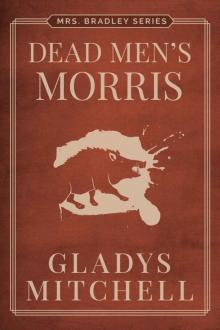 Dead Men's Morris (Mrs. Bradley)
Dead Men's Morris (Mrs. Bradley)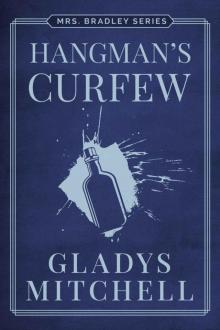 Hangman's Curfew (Mrs. Bradley)
Hangman's Curfew (Mrs. Bradley)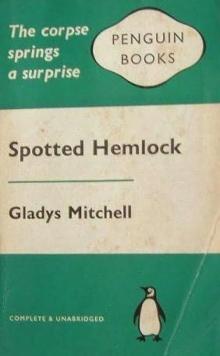 Spotted Hemlock mb-31
Spotted Hemlock mb-31 Tom Brown's Body
Tom Brown's Body St. Peter's Finger (Mrs. Bradley)
St. Peter's Finger (Mrs. Bradley) Brazen Tongue (Mrs. Bradley)
Brazen Tongue (Mrs. Bradley)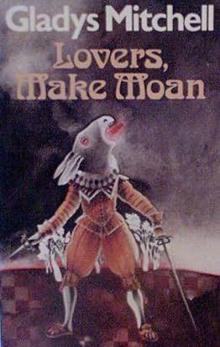 Lovers Make Moan mb-60
Lovers Make Moan mb-60 Sunset Over Soho (Mrs. Bradley)
Sunset Over Soho (Mrs. Bradley)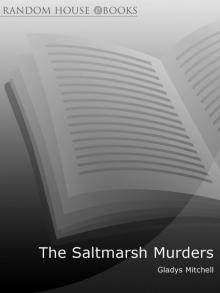 The Saltmarsh Murders
The Saltmarsh Murders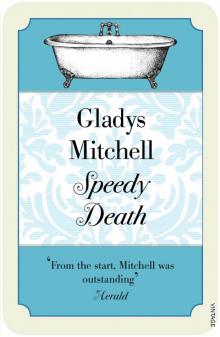 Speedy Death
Speedy Death Death at the Opera
Death at the Opera Death and the Maiden mb-20
Death and the Maiden mb-20 The Twenty-Third Man
The Twenty-Third Man Cold, Lone and Still mb-64
Cold, Lone and Still mb-64 Tom Brown's Body mb-22
Tom Brown's Body mb-22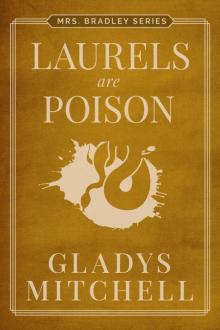 Laurels are Poison (Mrs. Bradley)
Laurels are Poison (Mrs. Bradley) St. Peter's Finger mb-9
St. Peter's Finger mb-9 Fault in the Structure mb-52
Fault in the Structure mb-52 A Javelin for Jonah mb-47
A Javelin for Jonah mb-47 Watson's Choice
Watson's Choice When Last I Died
When Last I Died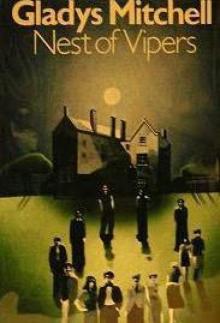 Nest of Vipers mb-55
Nest of Vipers mb-55 The Mystery of a Butcher's Shop
The Mystery of a Butcher's Shop My Father Sleeps (Mrs. Bradley)
My Father Sleeps (Mrs. Bradley)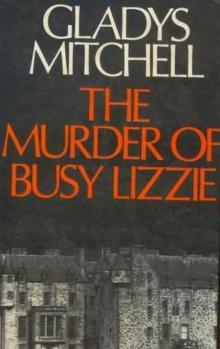 The Murder of Busy Lizzie mb-46
The Murder of Busy Lizzie mb-46 Here Lies Gloria Mundy mb-61
Here Lies Gloria Mundy mb-61 The Longer Bodies
The Longer Bodies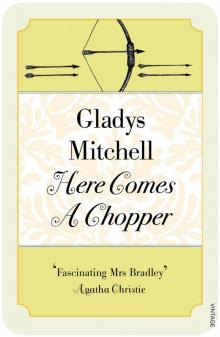 Here Comes a Chopper
Here Comes a Chopper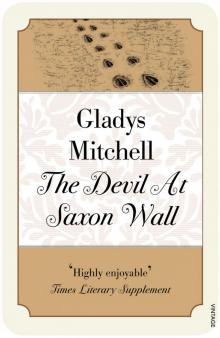 The Devil at Saxon Wall
The Devil at Saxon Wall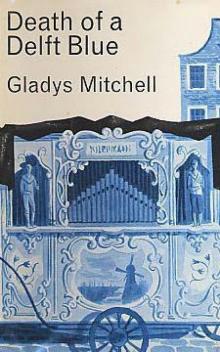 Death of a Delft Blue mb-37
Death of a Delft Blue mb-37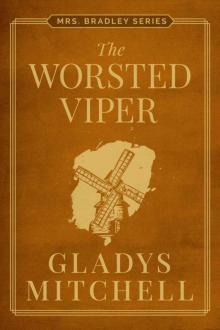 The Worsted Viper (Mrs. Bradley)
The Worsted Viper (Mrs. Bradley) Come Away, Death
Come Away, Death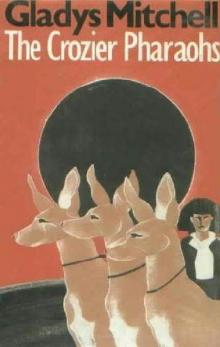 The Crozier Pharaohs mb-66
The Crozier Pharaohs mb-66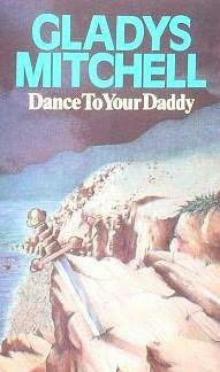 Dance to Your Daddy mb-42
Dance to Your Daddy mb-42